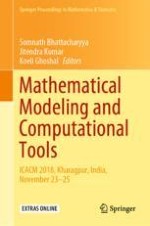This book features original research papers presented at the International Conference on Computational and Applied Mathematics, held at the Indian Institute of Technology Kharagpur, India during November 23–25, 2018. This book covers various topics under applied mathematics, ranging from modeling of fluid flow, numerical techniques to physical problems, electrokinetic transport phenomenon, graph theory and optimization, stochastic modelling and machine learning. It introduces the mathematical modeling of complicated scientific problems, discusses micro- and nanoscale transport phenomena, recent development in sophisticated numerical algorithms with applications, and gives an in-depth analysis of complicated real-world problems. With contributions from internationally acclaimed academic researchers and experienced practitioners and covering interdisciplinary applications, this book is a valuable resource for researchers and students in fields of mathematics, statistics, engineering, and health care.
